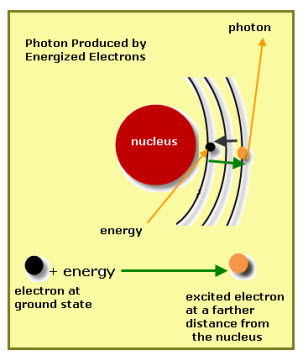Question: Why are some flames different colors?
Answer:
When you see colors, it is because some form of visible light has entered your eye and was absorbed by special light sensitive cells inside your eyes.
Visual light is a form of electromagnetic radiation, which is a type of energy produced when atoms emit photons.
Photons are packets of energy. Each color of visual light contains photons with a specific amount of energy. Photos for red light have less energy than do photons for yellow light or blue light. Visible light photons from least to the most energy are:
red, orange, yellow, green, blue, indigo, and violet
Visible light photons are emitted when something is heated. For example, in the photo methane gas combines with oxygen in the air and burns with a blue flame. The heat energy from the burning gas heats the metal objects causing them give off light photons, some are yellow and some orange to red.
When atoms are heated, the electrons outside the nucleus of the atom absorbs energy and becomes excited. This excited electron jumps to an area farther from the atom’s nucleus. When the electron loses this excess energy in the form of photons it returns to its original position. The color of the light emitted depends on the energy of the emitted photon. Different chemical atoms have “signature” colors when heated. This means that their electrons absorb certain amount of energy and emit photons with this same amount of energy. For example, copper when heated produces a green flame. Carbon when heated produces a yellowish flame.
(Paid Link)


